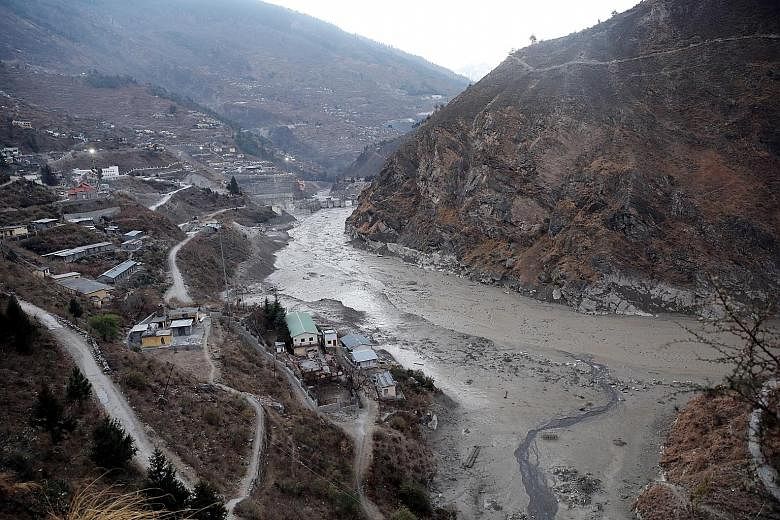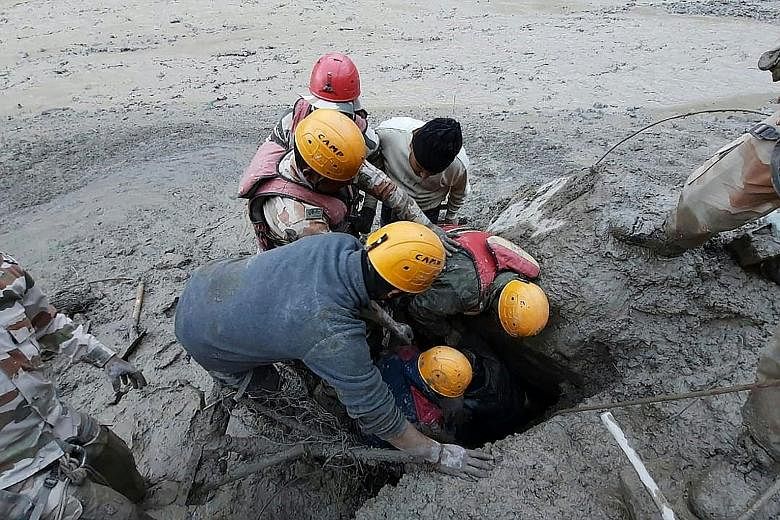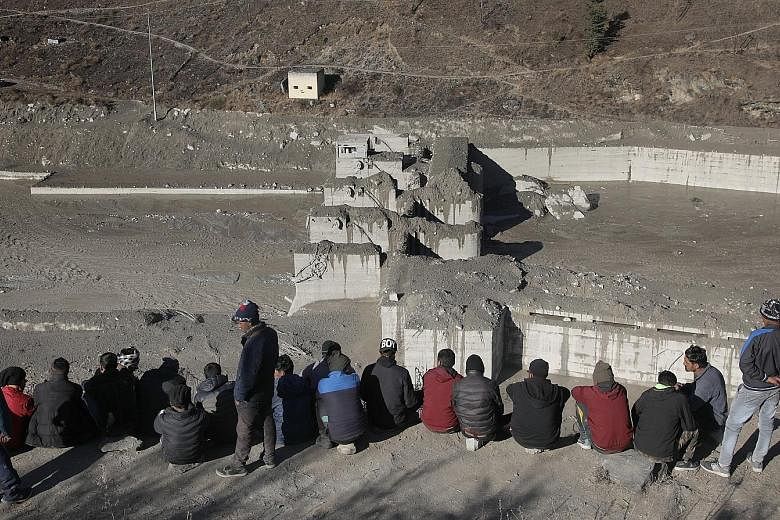At least 26 people are confirmed dead and around 171 reported missing following a devastating flash flood in the northern Indian Himalayan state of Uttarakhand.
A wall of water and debris barrelled down the Rishiganga river in Chamoli district, possibly caused by a glacial avalanche whose trigger is still unknown.
Most of those killed or missing are workers at two dam projects, including many migrant workers from the state of Bihar as well as Nepal.
The surge washed away a small hydroelectric power plant at Raini village in the shadow of Nanda Devi, India's second-highest peak, at around 10.30am on Sunday .
It also led to a spillover 5km downstream along the Dhauliganga river, which is joined by the Rishiganga, significantly damaging a major 520MW power project under construction near Tapovan village where more than 100 workers were on duty.
A multi-agency search and rescue operation, comprising representatives from the National Disaster Response Force, defence and paramilitary forces, has been at work since Sunday to retrieve victims, including those trapped inside two tunnels at the site of the Tapovan Vishnugad dam that was being built by NTPC.
They are using heavy earth-moving machinery to clear stretches inside a major tunnel that is reported to be more than 2km long.
A dog squad has also been flown in.
Twelve people were rescued from one of the tunnels on Sunday and between 25 and 35 others are estimated to be still trapped in the second one.
Mr Ashok Kumar, the state police chief, told Reuters that rescuers had gone 150m into the second tunnel, but debris and slush were slowing progress.
One of those at work at the Tapovan Vishnugad dam on Sunday morning was Mr Vipul Kaireni, 27, who was driving a heavy earth-moving vehicle.
He received a phone call from his family at 10.39am warning him of a flash flood. Mr Kaireni disconnected the call, thinking it was a prank as he could not see or hear any signs of a flood.
They called him again at 10.40am and that was when he saw the wall of water and debris - around "200 feet (61m) high" - pummelling its way through to the barrage site.
He and around 25 other workers managed to run and climb to a higher spot using inactive electricity cables.
"I ran so fast, it was as if my chest was about to explode. Had I got that first phone call another two or three minutes later, I would have been among those washed away," he told The Straits Times.
"I saw many workers falling into the river, being swept away and drowning."
Locals said there could have been "twice or thrice" as many workers missing or dead had the disaster struck on a regular working day instead of a Sunday, which is a holiday for most people.
The flood also washed away five bridges, and the authorities have deployed helicopters to deliver emergency food rations and medical care to 13 or so villages that have been cut off.
They are also working on building new bridges.
Mr Prakash Singh Rana, 37, was in Tapovan for work on Sunday morning when the disaster struck and snapped a bridge that led to his village, Bhagyul.
He is one of the estimated 50 or so villagers from Bhagyul who have since been unable to return home as their village remains cut off.
"We are hoping the administration will be able to set up an alternative way to cross the river soon," he said.
Mr Kaireni, a contractual worker, added that locals who depended on the dams for jobs are also concerned about prolonged unemployment.
This disaster comes around eight years after flash floods triggered by a cloudburst killed at least 5,000 people in Uttarakhand in June 2013.
It has triggered renewed concerns about untrammelled construction activity, including the building of large-scale dams, in a fragile hill ecosystem.
A team of scientists has been flown in to ascertain the exact cause of Sunday's flash flood.




